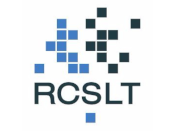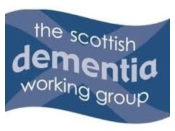
Living with dementia: home safety and security
Living with dementia: home safety and security
This factsheet is available for sponsorship, email marketing@dlf.org.uk
Sponsorship has no influence on our impartial content
Factsheet contents
- Introduction
- Planning for a safer home
- Home access
- Moving around the home
- Smoke and heat alarms
- Gas detectors
- Telecare
- Accessing your needs
- Provision of equipment
- Funding sources for care
- For further advice from us
- Contributors
- Useful organisations and resources
- References and further reading
Introduction
Keeping safe at home can be more of a concern for those living with dementia. Simple devices and equipment can help to reduce the risks in the home, help maintain your independence and provide reassurance to family members and carers.
Planning for a safer home
Before considering expensive technology and equipment to prompt, warn or trigger alarms, consider simple solutions that may lower risk. Some hazards cannot be anticipated, for example the light bulb blowing when a person is climbing the stairs. Others are more apparent and it is therefore possible to reduce risk or eliminate the hazard completely. So, for example:
- Remove loose rugs as they may be a trip hazard
- Make sure stairs and passageways are kept clear of clutter and that the stair carpet is securely fixed and isn’t worn
- Make sure lighting is adequate. Fit long-life light bulbs
- Look at the layout of furniture – you may be able to create a safer space by rearranging or reducing the furniture in a room
- Use equipment that is designed to provide support, such as grab rails and walking aids, rather than leaning on fixtures, such as door handles and towel rails
- Place electrical items near to power points to avoid trailing flex
- Wear good fitting and sensible footwear.
Home access
People who require support to live independently may well have to allow access to their home to a range of different people involved in their care, but it is important that they still feel safe within their home. Examples of who may need access to the home include daily carers visiting to help with personal care and meal preparation or emergency responders to a telecare alarm activation. Issues could include:
- the number of duplicate keys to be cut
- losing keys
- controlling access to the home
- worrying about a potential increased risk from intruders
- keeping the house secure.
Key safe
 Some people living with dementia may be unable to respond to the doorbell. A key safe offers a simple solution to this as it enables carers, health professionals or telecare responders to gain access to the home when required. In addition, if the house occupant has a fall or is ill, family members or carers can easily enter the house to assist without the need to break in.
Some people living with dementia may be unable to respond to the doorbell. A key safe offers a simple solution to this as it enables carers, health professionals or telecare responders to gain access to the home when required. In addition, if the house occupant has a fall or is ill, family members or carers can easily enter the house to assist without the need to break in.
A key safe is a secure metal box that stores a key and is designed to be mounted outside by the front door. The safe is opened by a numeric code that must be punched in which is only known to the householder, family member or carer or whoever it is agreed should know it. A single copy of household key/s are placed inside, but can only be retrieved by someone who knows the correct code to open the box. Choosing a code made up of familiar numbers, such as a birth date, can help someone experiencing memory difficulties to remember it. The code can be change as required.
Key safe units are usually wall-mounted (into brick or concrete), although there are some that have a locking shackle (like a padlock) or that slip over the top of the door and are kept in place by closing the door. Key safes should be installed out of easy line of sight. Tests have shown that some key safes are more secure than others, which may determine whether they are approved by home insurance providers (Williams and King, 2010). One relevant standard that some key safes meet is LPS (Loss Prevention Standard), a specification for testing and classifying the burglary resistance of building components, strong points and security enclosures.
If your key safe is provided by your local council, they will often arrange for its fitting. If you buy a key safe privately and help is needed to fit it, your local AgeUK may have a handyman service which can help for a small fee.
 Losing keys is a common problem, but having a set place to keep them may provide a solution. There are also electronic tags that can be attached to keys to help someone to find them when they have been mislaid within the home. The electronic tag is activated by pressing a button on a transmitter remote control, and will bleep.
Losing keys is a common problem, but having a set place to keep them may provide a solution. There are also electronic tags that can be attached to keys to help someone to find them when they have been mislaid within the home. The electronic tag is activated by pressing a button on a transmitter remote control, and will bleep.
Opening the door to strangers can be risky. A door viewer, a chain or door entry system (see below) can provide a way of identifying the caller before the door is opened fully. Memory prompt sensor devices that give a recorded warning could be triggered as you approach the door from inside. For example, it could automatically remind you to put your safety chain on before you open your door to a caller.
Bogus caller alert/button
NB - For a bogus caller alert/button to be effective the person living with dementia must be able to understand it’s purpose and when and how to utilise it.
A bogus caller alert/button is not suitable for someone in the later stages of dementia.
People living with dementia may be vulnerable to bogus callers, especially if living alone. A bogus caller alert button provides you with back up assistance if you encounter such a situation on your doorstep.
It works as follows:
- An alarm button is attached next to the main door and if the householder has concerns or suspicions about a caller, a button is pressed to raise an alarm.
- This alarm button connects to a response centre who can listen in on the doorstep conversation and take appropriate action if necessary.
The alarm can be programmed to be silent, so the bogus caller is not aware that they are being listened to by the response centre. Some models can be programmed to prompt the individual to ask the caller for identification.
 If a telecare system is installed then telecare buttons can be placed near the front door. These may be called ‘bogus caller buttons’ or 'panic buttons'. This allows you, if you fear that a bogus caller is trying to trick you or break into your property, to simply press the button, automatically raising an alarm at the help centre.
If a telecare system is installed then telecare buttons can be placed near the front door. These may be called ‘bogus caller buttons’ or 'panic buttons'. This allows you, if you fear that a bogus caller is trying to trick you or break into your property, to simply press the button, automatically raising an alarm at the help centre.
The alarm call can be programmed to be silent so that the bogus caller is not aware they are being overheard by the call centre. The call centre can listen to the situation and intervene, perhaps calling the police, if necessary.
Door entry system
 A door entry system is a remote way of checking who is at the door before giving access. It can make life easier for some people who may be concerned about security or have difficulty getting to the front door.
A door entry system is a remote way of checking who is at the door before giving access. It can make life easier for some people who may be concerned about security or have difficulty getting to the front door.
A door entry system comes with a remote door release button which can allow you to open the door from your armchair. Some door entry system models come with a video screen and intercom and can improve safety and security because you can see and speak to your callers before deciding on whether to allow them into your home.
Intercom systems also enable sound or speech to be transmitted between two or more locations in the same house. Systems may be mains or battery operated and either connected by a wire or wireless. Some only allow one-way communication, others are two-way, allowing full conversation. Some have a handset which must be used when speaking through the system, others have a hands-free facility. This may allow the unit to transmit messages once speech is sensed. If no speech is sensed, the unit remains on receive mode.
A door entry system can be expensive, so it would be advisable to try it out first to ensure that it meets your needs.
Door entry systems can be suitable for people living with early stage dementia. They may not be suitable for a person to operate who is already experiencing significant memory problems and those in the later stages of dementia.
Property/door exit sensor
 Most people in the early stages of dementia still enjoy going out and about independently. A door exit sensor provides reassurance to family or a carer that they will be alerted in the event of someone not returning home.
Most people in the early stages of dementia still enjoy going out and about independently. A door exit sensor provides reassurance to family or a carer that they will be alerted in the event of someone not returning home.
Door exit sensors are placed above a front or back door. They can detect when a person leaves home and when they return. If they do not return within the pre-set time, the telecare response centre is automatically contacted and will alert relatives or another nominated person or service that the person hasn't returned.
Some property exit sensors may play a pre-recorded message as you exit the door, reminding you to take your keys with you or to lock your door for example.
Nuisance call blockers
 Some people living with dementia may find it difficult to deal with nuisance telephone calls or are at risk of being taken advantage of by cold calling companies trying to sell products. A call blocking service can be requested through your telephone company which will block most cold callers.
Some people living with dementia may find it difficult to deal with nuisance telephone calls or are at risk of being taken advantage of by cold calling companies trying to sell products. A call blocking service can be requested through your telephone company which will block most cold callers.
Alternatively, you can purchase a call blocking device can which block all numbers which are not recognised. Some models will divert an unwanted or suspicious call to a relative or carer to deal with, others will ask unrecognised or ‘no number’ callers to leave a message stating who they are so that you can listen to, and then decide, if you’d like to accept the call. Some telephones have a facility on which you can block individual numbers, international or withheld numbers.
Further reading: How to stop nuisance phone calls by Which?
Moving around the home
A person living with dementia may move and walk around more than usual. Walking about may indicate an unmet need - these may include a response to anxiety, to relieve pain or discomfort or becoming confused about where they are. Understanding what this is and finding a solution could help to maintain the person's well-being. Further reading: Symptoms of walking about by the Alzheimer's Society.
Personal alarms and falls detectors
 Falls are not an inevitable part of living with dementia, however some symptoms can make people with dementia more prone to falling. For example, people with dementia are more likely to experience problems with mobility, balance or muscle weakness, or may have difficulty with finding their way around. Also, people living with dementia are more likely to take medication that may make them drowsy, dizzy or lower their blood pressure - these factors increase the risk of falls (NHS Inform, 2018).
Falls are not an inevitable part of living with dementia, however some symptoms can make people with dementia more prone to falling. For example, people with dementia are more likely to experience problems with mobility, balance or muscle weakness, or may have difficulty with finding their way around. Also, people living with dementia are more likely to take medication that may make them drowsy, dizzy or lower their blood pressure - these factors increase the risk of falls (NHS Inform, 2018).
A personal alarm is a useful safety item to have in case of a fall (NHS Choices, 2018) or other emergencies. This device comprises of a call safety button which is worn around the neck or wrist.
For shorter distances, such as in the home or garden, a simple pager may be useful. In the event of a fall or emergency, the pager can be activated by pressing a button, which automatically sends an alert to family members or a carer who are nearby and can assist.
For people who live alone, it would be advisable that the personal alarm is linked to a telecare system. In this situation when the alarm is activated, it connects to a 24-hour response centre which contacts your family members or the emergency services as appropriate.
Some alarms come with an inbuilt falls detector, so that if the wearer falls the alarm will go off automatically. It is advisable to have the additional falls detector option, particularly for people living alone and if the wearer is liable to forget to press the button due to dementia. Also, having the additional falls detector may prevent a distressing wait for help if you do experience a fall and are unable to summon help. NB - for alarms to work they do need to be body worn (users are advised to wear them at all times) or kept within close reach and this may be difficult for people living with dementia.
Emergency lifting cushion
 The emergency lifting cushion is designed to help someone to get up from the floor after a fall. It is used with the assistance of a carer or family member.
The emergency lifting cushion is designed to help someone to get up from the floor after a fall. It is used with the assistance of a carer or family member.
Following a fall, a carer or family member gently rolls the person onto the lifting cushion. The cushion is then inflated and the person is supported as they are gently raised up into a sitting position - from there they can be moved over to another chair or to a standing position.
Before use, the carer or family member should familiarise themselves with operating the cushion and ensure the person who will be lifted is comfortable about being positioned on it. Some people with more later stage dementia may feel uncomfortable or alarmed by being lifted up in this manner. It is therefore worth trying out the lifting cushion before buying to ensure that it is suitable.
Movement/motion sensors
In the later stages of dementia some people may walk about the home. This may not be a concern for the person - in fact they may find it a positive experience and walking can have physical and psychological benefits for the individual. However there may be times when walking does present risks, such as getting lost or leaving the house during the night when they are not appropriately dressed. Carers and family may find walking behaviour difficult (Alzheimer’s Society, 2018) and walking about can result in falls or accidents.
Sensors can be positioned around a home. Motion sensors work as follows:
- They send out an invisible beam and are triggered when they detect motion (i.e someone walking past)
- When motion is detected a safety alert is sent to a carer or family member who is nearby, letting them know that someone is moving around the home and may require assistance. This allows them to guide the person back to safety if necessary
- Some motion sensor models operate with Wi-Fi, others use infra-red heat sensors.
Movement sensors can be linked to telecare systems. If no movement is detected, the telecare response centre is alerted - this could be an indication that the person is unwell and needs assistance for example.
Sensors detecting movement from a bed or chair
 Mobility problems, disorientation or the loss of safety awareness can occur as dementia progresses. Therefore increased supervision from family or carers may be neccessary. Bed and chair sensors may offer some assistance. They comprise of a mat or pad which is placed under the mattress or chair cushion. When weight is removed from the mat, an alert is triggered which is sent to a carer or family member nearby, making them aware that the person has stood up and may require assistance.
Mobility problems, disorientation or the loss of safety awareness can occur as dementia progresses. Therefore increased supervision from family or carers may be neccessary. Bed and chair sensors may offer some assistance. They comprise of a mat or pad which is placed under the mattress or chair cushion. When weight is removed from the mat, an alert is triggered which is sent to a carer or family member nearby, making them aware that the person has stood up and may require assistance.
Sensors can either trigger an alarm immediately or start a timer. If you don’t get back into your bed or chair within a preset time, then the alarm sounds. This means for example that if a person goes to the toilet or to the kitchen and then returns to bed, the alarm will not be activated. But if the person falls and does not get back into bed, the alarm will be raised. The pads usually trigger a pager that can be positioned 100-300 metres away, although some simpler units sound an alert on the sensor unit itself.
Auto diallers
 Most auto dialler alarms have a portable pendant transmitter that is worn around the user's neck or wrist. When the pendant button is pressed it sends a radio signal to a table top alarm unit placed near a phone socket. The unit will automatically dial several numbers in turn (which are preset), until it receives a response. These numbers could be for relatives or friends and could be a combination of mobiles and landlines. Programming to dial more than one number increases the chances of the call being answered. Permission must be sought before programming the unit to call the police, a doctor or anyone else.
Most auto dialler alarms have a portable pendant transmitter that is worn around the user's neck or wrist. When the pendant button is pressed it sends a radio signal to a table top alarm unit placed near a phone socket. The unit will automatically dial several numbers in turn (which are preset), until it receives a response. These numbers could be for relatives or friends and could be a combination of mobiles and landlines. Programming to dial more than one number increases the chances of the call being answered. Permission must be sought before programming the unit to call the police, a doctor or anyone else.
There are significant limitations of auto dialler alarms compared to telecare systems.
There are no ongoing costs to using auto dialler alarms, although standard telephone and line rental charges still apply.
Unlike a telecare system, autodiallers cannot guarantee a response 24 hours a day, every day. Friends, relatives or carers may not be available to answer their phone.
The individual's relatives and friends whom the auto dialler rings may not always answer their phone 24 hours a day, mobile phone reception may not always be available, or they may be unable to take action immediately.
Auto dialler systems also tend to have fewer automatic checks to alert you, or someone else, if something goes wrong. For example, they may not warn anyone if they are disconnected from the phone line, the mains electric, or if the battery in the pendant starts getting flat. These are standard safety features in telecare systems.
As there are no ongoing weekly or monthly charges for the service, an autodialler alarm may suit some people - for example someone who lives alone or spends time alone and would like to be able to get in touch with friends/relatives who live locally at one push of a button. The autodialler is less suitable for emergencies where an immediate response is critical.
Mobile phones with emergency buttons
 Mobile phones with an emergency or ‘panic’ button work in the same way as an auto dialler; pressing the button will call or text a series of preset numbers until it receives a response. Some automatically include your location in the text messages that are sent out.
Mobile phones with an emergency or ‘panic’ button work in the same way as an auto dialler; pressing the button will call or text a series of preset numbers until it receives a response. Some automatically include your location in the text messages that are sent out.
These systems have the advantage that they may work outside of the home, however they will not work if you are in an area with no reception or the mobile phone's battery is flat.
They also require an ongoing contract or regular topping up of pay-as-you-go credit.
Signage
 Experiencing disorientation around the home can be an issue for some people living with dementia. The distress of getting lost around the house can be alleviated with simple signage. Clear and easy to read signs placed on doors or arrow signs pointing in the direction of specific rooms, such as the toilet or kitchen, can be very helpful.
Experiencing disorientation around the home can be an issue for some people living with dementia. The distress of getting lost around the house can be alleviated with simple signage. Clear and easy to read signs placed on doors or arrow signs pointing in the direction of specific rooms, such as the toilet or kitchen, can be very helpful.
Activity monitoring systems
 Some people living with dementia experience disruption of their day and night routine. An activity monitoring telecare system can help determine a person's routine over several days by logging their movement around and in and out of the house. The purpose of the system is to identify the person’s care needs, especially if someone is living alone.
Some people living with dementia experience disruption of their day and night routine. An activity monitoring telecare system can help determine a person's routine over several days by logging their movement around and in and out of the house. The purpose of the system is to identify the person’s care needs, especially if someone is living alone.
The activity monitoring system can produce graphs detailing where time in the home is spent - for example leaving the house for long periods of the day or night, frequently using the bathroom or staying for long periods in the lounge, not using the kitchen etc. This can provide an insight for family and carers and subsequently care packages can be optimised to try and address any ongoing issues. As this detailed monitoring could be considered intrusive it is very important that informed consent is obtained before use of this technology (Mental Capacity Act 2005).
Smoke and heat alarms
 Having a smoke alarm installed is a vital safety measure if you have dementia. Ideally, smoke alarms should be mains powered so that their effectiveness does not depend on battery life.
Having a smoke alarm installed is a vital safety measure if you have dementia. Ideally, smoke alarms should be mains powered so that their effectiveness does not depend on battery life.
For people who have a hearing impairment, as well as a standard smoke alarm bell, the addition of a flashing light or strobe can act as an alert to a possible fire.
If you are concerned that you would not hear the smoke alarm during the night, a pillow vibrator could help. The alarm is triggered by smoke, which then activates the pillow shaker, waking the person up. Some models have an additional built-in call alert to family members or a call centre, which in turn alerts the emergency services.
If due to dementia a person is unable to take the appropriate action when the alarm goes off, then a telecare smoke alarm would be a safer option. A telecare smoke alarm is linked to a response centre which is alerted when the smoke alarm is triggered. The response centre staff can then talk through a telecare speaker to ascertain the situation. They will alert the fire brigade and/or notify a carer or relative if necessary. These alarms may be appropriate for those who would find it difficult to get out of their home promptly or might not remember what the smoke alarm was for.
If a telecare smoke alarm is not installed as part of a telecare system, there should still be at least one working standard smoke alarm in a home which will sound an alarm if it detects smoke - but these will not automatically alert a help centre.
Further reading: More information on fitting smoke alarms can be found on the fire service website.
Extreme temperature sensors
 Smoke alarms are not generally recommended for kitchens as some smoke can be expected from cooking and toasting. Consequently a extreme temperature alarm or heat alarm may be considered.
Smoke alarms are not generally recommended for kitchens as some smoke can be expected from cooking and toasting. Consequently a extreme temperature alarm or heat alarm may be considered.
Staying independent for as long as you can with dementia is recognised as beneficial to physical and mental well-being. However, carrying out some activities independently carries more risk than others; cooking can come into the higher risk category - for example, remembering to switch appliances off and being vigilant about food cooking under the grill or on the hob etc. The extreme temperature sensor is an important safety back up device to have at home to help to mitigate some of these risks. The sensor, which is usually located in the kitchen, works by detecting an extremely high temperature or sudden rises in temperature and sounds an alarm.
The sensor can also detect if the temperature in your home has dropped too low. For example, if someone living with dementia had forgotten turn on the heating in winter or has left doors or windows open resulting in the air temperature dropping, the extreme temperature sensor will detect this, triggering the alarm.
The extreme temperature sensor can be purchased as a stand-alone device. However, if you would have difficulty taking appropriate action if the alarm should go off, it would be advisable to have the alarm linked to a telecare system. In this situation, when the temperature sensor alarm goes off, a 24-hour response centre would be alerted through the telecare system. They would contact the appropriate services and may speak directly to the person thorough the telecare system, giving them the necessary advice and reassurance.
Gas detectors
 People who prefer using a gas cooker may find that it is difficult to change to other methods - such as microwaving or using an electric cooker, which overall are considered safer. Operating a gas cooker may be very familiar and ingrained in long-term memory from years of practice. However, it is important to weigh up the benefits with the risks of using a gas cooker, as the progressive symptoms of dementia can make everyday tasks more challenging.
People who prefer using a gas cooker may find that it is difficult to change to other methods - such as microwaving or using an electric cooker, which overall are considered safer. Operating a gas cooker may be very familiar and ingrained in long-term memory from years of practice. However, it is important to weigh up the benefits with the risks of using a gas cooker, as the progressive symptoms of dementia can make everyday tasks more challenging.
Some of the risks of cooking with gas for people living with dementia include:
- turning the gas on and forgetting to ignite it
- leaving pans on that boil over, extinguishing the flame
- forgetting that foods have been put on to cook
- using old appliances that may be a safety risk.
Leaking gas is extremely dangerous. Ultimately, leaking gas can build up to dangerous levels which can result in explosions.
If you can smell gas, ring the emergency number: 0800 111 999
Many newer cooker models automatically cut the gas off if the flames are not ignited, but older models may not have this safety feature. These risks can be reduced somewhat with the installation of a gas detector (not to be confused with carbon monoxide alarms) and ashut off valve.
Once installed, the gas detector sounds an alarm if it detects dangerous levels of gas. Some only sound an alarm (the person with dementia must be able to recognise what the alarm is for and act on it). Some will shut off the gas supply preventing further exposure.

Some people living with dementia may have difficulty taking appropriate action when the gas alarm sounds. For this reason, it is advisable that the gas detector is linked to a telecare system. In this instance when the alarm sounds, a 24-hour response centre receives an alert. They will then raise the alarm by contacting the emergency services or a named relative as appropriate. In addition to detecting gas from kitchen appliances, the gas detector and shut off valve will also respond if there is any gas escape from other sources, such as a fire or other nearby appliances which you may have forgotten to turn off.
If you do decide to have a gas shut off valve in addition to the gas detector, please ensure that there is a named person available to turn the gas supply back on again.
You can purchase a gas detector separately from the shut off valve. However, it is advisable to purchase the shut of valve in addition to the gas detector, as there is a risk of forgetting to turn off the gas even when the gas detector alarm has sounded.
The locking cooker valve is a free safety device designed to fit to the existing gas cooker pipework. A key is used to lock and unlock the valve. Locking the valve shuts off the gas supply; the cooker can’t be unintentionally turned on or left on when the carer or relative is out of the room. More information can be found here: /www.sgn.co.uk/LCV
Carbon monoxide monitor
Carbon monoxide is a gas which has no smell, taste or colour.
Exposure to above-recommended concentrations of carbon monoxide can cause headaches, dizziness, nausea, convulsions and death.
It is important to have a carbon monoxide monitor installed if you use any appliance which burns solid fuel, oil or gas (The carbon Monoxide and Gas Safety Society. 2018).
Gas fires, water heaters and solid fuel appliances such as wood burners or open fires are all capable of emitting this gas. Gas appliances that are old or have not been regularly serviced can present an increased risk of carbon monoxide poisoning. In addition, carbon monoxide may be emitted from any faulty cooking or heating appliance.
A servicing contract would ensure that appliances are checked annually and are in good working order. Servicing companies generally take on the responsibility of contacting their clients when a service is due, making it one less thing to remember.
 The carbon monoxide detector will sound an alarm if high levels of carbon monoxide are detected in the air. If, due to dementia, you would be unable to take appropriate action, the carbon monoxide alarm can be linked to a telecare system. In this situation, when the alarm goes off a response centre is alerted. They would speak to the person to reassure and advise them what to do, as well as contacting the emergency services or family member or carer as appropriate.
The carbon monoxide detector will sound an alarm if high levels of carbon monoxide are detected in the air. If, due to dementia, you would be unable to take appropriate action, the carbon monoxide alarm can be linked to a telecare system. In this situation, when the alarm goes off a response centre is alerted. They would speak to the person to reassure and advise them what to do, as well as contacting the emergency services or family member or carer as appropriate.
As with smoke and heat alarms, carbon monoxide alarms are readily available on the high street. The ones we list have non-standard features such as integration with strobe or vibration systems for individuals who are deaf or have hearing loss.
Telecare
Telecare is the 'continuous automatic and remote monitoring of real-time emergencies and lifestyle changes over time to manage the risks associated with independent living' (Calderdale Council Adult Health and Social Care Services, 2010).
Telecare helps to maintain independence and quality of life, as well as providing reassurance for carers or family members. It can prevent a minor event in the home from turning into a crisis, as it raises the alarm and provides the person living with dementia with a prompt and appropriate response.
There are four elements to telecare:
- A telecare unit
- Telecare sensors that raise an alarm when required
- A monitoring centre to receive alarm calls and to speak directly to the person living with dementia when required
- Response to the alarm may be provided by your family or a friend, the emergency services or a mobile response team.
Some devices which are designed to keep you safe at home require you to respond to an alarm such as the smoke or gas alarm, other devices require you to press a button as with the personal alarm.
Many people with dementia would be unable to take appropriate action if the smoke alarm or gas detector went off or would not remember to press their personal alarm button in the instance of a fall.
For this reason it is important that safety devices are connected to a telecare system
When devices are connected to telecare, a response centre receives an alert - for example if the person falls (falls detector) or if the smoke alarm or temperature sensor goes off. The telecare service may speak to the person through a telecare box to obtain additional information if necessary, or they may contact a named person or the emergency services as appropriate. In some cases, they may have responders who will visit the home. Here is a list of devices which can be linked to telecare:
- bogus call buttons
- motion sensors
- falls detectors
- chair and bed occupancy sensors
- property exit sensor
- smoke alarm
- gas detectors and gas shut off
- carbon monoxide monitor
- extreme temperature sensor
- flood detector
Please note this list is not exhaustive. More guidance on obtaining Assistive Technology devices and telecare products can be found in DLF's fact sheet Choosing telecare. Information on ethical considerations for the use of assistive technology/telecare can be found here.
Assessing your needs
A range of conditions may cause forgetfulness, anxiety, low mood and confusion, however they may also be early signs of dementia. A visit to your GP would be recommended to rule out other causes and allow for a better understanding of the illness and how it may progress, as well as strategies on how to manage the symptoms.
The assessment for dementia is a process that takes time and goes through various stages and tests. These may include a physical examination, a blood test and interviewing both the person and their concerned friend/relative separately. This may lead to a referral to a local memory service or clinic. The GP, Community Psychiatric Nurse or a member of the memory clinic staff will be able to advise on symptoms, how the disease may develop and provide information on appropriate treatment. They will also be able to advise you on what support there is available locally. Prior to an appointment it can be useful to keep a journal or diary of any tasks that have become more difficult or concerns that you may have.
The GP can refer you for a Health and Social Care Needs Assessment, or you can contact your local authority Adult Social Care Department and make a self-referral, or have a friend or relative do it for you. By law anyone who appears to need care and support can request an assessment regardless of their income or savings.
The assessment will focus on your needs, how they impact on your well-being and on what you want to achieve and will aim to identify any difficulties you may have in caring for yourself. An Occupational Therapist will carry out the assessment and will be able to advise on strategies to help reduce any identified risks and recommend any equipment that may be helpful to maintain independence. If someone else is helping you they are also entitled to a carers assessment, which will help to identify what help and support they may need.
There are a number of charitable organisations listed below that can provide help and support for the person with dementia and their relatives and carers.
Provision of equipment
Many simple assistive technology devices mentioned in this fact sheet can be privately purchased. Others can be provided by local authorities or the NHS to meet an assessed need; you or a family member can request a home assessment from an occupational therapist
Permanent loan: Local Authority and health provision
If you require disability equipment, telecare or adaptations to your home then your local authority may be able to help. They can supply equipment or minor adaptations that cost under £1,000, free of charge. (Department of Health 2014, section 2.9). In Scotland, Local Authorities make their own arrangements for provision of minor adaptations and details can be accessed via your Council's website.
Some equipment such as pressure relieving cushions, mattresses, some mobility aids and wheelchairs are supplied by your local Health Authority. A referral to the District Nurse or Wheelchair Service for these items can be made via your GP or other health professionals including a Community Occupational Therapist or Physiotherapist.
Disabled Facilities Grant (DFG)
Should you need adaptations to your home that cost more than £1,000 that will allow you to continue to live there, you may be eligible for a Disabled Facilities Grant (DFG). An Occupational Therapist will complete an assessment and if the work is deemed necessary to meet your needs and is reasonable and practical, then they will arrange for a financial assessment to be undertaken.
If you meet the criteria for funding, the Occupational Therapist will make recommendations for the adaptations required.
Private purchase
If you do not wish to use local authority services, there are independent Occupational Therapists who can assess your needs and help to advise or assist you in buying any equipment or arrange adaptations to your home that you may require.
You can also purchase equipment privately, but it is recommended that you compare different options first. There may be an equipment demonstration centre near you where you can look at and try out equipment before purchasing, as well as receiving impartial advice.
Charity and Grant funding
Charitable trusts may sometimes provide equipment or give a grant for equipment purchase.
Turn2Us is a national charity that helps people who are in financial difficulty find grants for the provision of equipment, and Community Care gives a list of charitable organisations that give grants.
Charities tend to give awards in accordance with a predetermined criterion, so it is important that you carefully select the organisations that apply to your condition. There are also some workplace charities that will provide support for ex-employees. If you are or have served in the Armed Forces, or are a dependent or carer of a person who has served, The Royal British Legion may be able to provide you with support for specialist dementia care or grants for equipment and adaptations to your home, or small crisis grants to meet unexpected expenses.
Funding sources for care
If you need support with daily tasks that may include help from a carer, the delivery of meals or residential care then your local authority may help with the cost. How much support you are entitled to will depend on your income and savings and what your care needs are. A financial assessment of your means will be carried out to establish how much support you are entitled to.
You may be eligible for further financial support such as Attendance Allowance or Personal Independence Payment (PIP) and if you have a person who cares for you for 20 hours or more a week, they may be eligible for some financial support.
If you live alone you can apply to your local authority for a 25% reduction on your Council Tax bill, or if you live with someone else then they may be eligible for a 25% reduction on the Council Tax bill. As your condition progresses, they may be eligible for a further 25% reduction.
Private carers and residential care
If you are looking for a carer or are considering residential care, then you should ensure that the staff are trained in dementia care and are able to give the specialist help you need. A residential home should be designed to provide the best possible environment for you. There are a number of organisations that can help you with choosing a suitable home, including:
- Elderly Accommodation Council
- Housing Care.org
- DementiaUK
- Relatives and Residents Association
- Paying for Care
Care Home ratings/selector
Inspection reports and care home ratings can be found via:
- England – Care Quality Commission
- Scotland – Care Inspectorate
- Wales – Care Inspectorate Wales
- Northern Ireland – Regulation and Quality Improvement Authority
Charity and Grant funding
Charitable trusts may sometimes provide funding for care, nursing or residential respite, permanent care or a befriending service. Charities tend to give awards in accordance with a predetermined criterion, so it is important that you carefully select the organisations that apply to your condition. There are also some workplace charities that will provide support for ex-employees. If you are or have served in the Armed Forces, or are a dependent or carer of a person who has served, The Royal British Legion may be able to provide you with support for specialist dementia care or small crisis grants to meet unexpected expenses.
Further information relating to grants is available from:
- Community Care – a list of charities providing grants.
- Turn2us - Turn2us is a national charity that helps people in financial hardship gain access to welfare benefits, charitable grants and support services.
- Housing grants information from Disability Rights UK - led by people with diverse experiences of disability and health conditions, from different communities.
- Disability Grants - grants for disabled adults.
- My grants - accessibility grants for disabled and older people.
- Grants for individuals - this website is run by the Directory of Social Change and lets subscribers search for grants. It is intended for organisations searching for funding on behalf of individuals.
- The Money Advice Service - Charitable grants and major and minor adaptations.
VAT relief
If you have a diagnosed long-term condition, you may be able to claim VAT relief on purchases relating to the condition. The company supplying the equipment should be able to advise you, or there is general information on VAT relief on the GOV.UK website.
For further advice from us
For clear, practical advice and information on products and suppliers of daily living equipment, please have a look at our Living made easy website.
If you would like further advice related to choosing equipment for everyday living you could try relevant sections of AskSARA, our free online guided advice tool. AskSARA will ask you questions about yourself and your environment and then offer relevant advice, product suggestions and supplier details.
You can contact the DLF Helpline, which is open Monday to Friday from 10am to 4pm. Tel: 0300 999 0004 (calls charged at your standard land line rate even if you are phoning from a mobile).
Alternatively, you may wish to contact us via email: info@dlf.org.uk or by letter: DLF, 34 Chatfield Road, Wandsworth, London SW11 3SE.
To help us give you a concise and informative reply, please provide us with as much detail as possible, including information on the difficulties you are having and any solutions you have considered, such as equipment ideas.
Another source of advice is a disabled or independent living centre where you would have the opportunity to try out a range of equipment. There are several of these around the country where you can go for impartial advice. Your local authority will also be able to give you details of centres in your area.
Contributors
Roisin Hodgson
 Roisin Hodgson qualified as an occupational therapist in 1993 and has worked extensively in hospitals and within the community. Now working as a private occupational therapist, Roisin has an interest in occupational therapy approaches to anxiety, panic and post traumatic stress disorder. Many of Roisin's clients have dementia; she works with them and their families advising on a range of solutions to help maintain independence, including home adaptations, daily living aids and telecare.
Roisin Hodgson qualified as an occupational therapist in 1993 and has worked extensively in hospitals and within the community. Now working as a private occupational therapist, Roisin has an interest in occupational therapy approaches to anxiety, panic and post traumatic stress disorder. Many of Roisin's clients have dementia; she works with them and their families advising on a range of solutions to help maintain independence, including home adaptations, daily living aids and telecare.
Rebecca Woodfield
 Rebecca Woodfield is an occupational therapist working for the NHS in Oxfordshire. Rebecca works with older adults in the community, supporting people to live independently in their own homes. Rebecca has a BSc (Hons) degree in Occupational Therapy from Coventry University and is currently studying a masters module Expertise in Dementia with the University of West London.
Rebecca Woodfield is an occupational therapist working for the NHS in Oxfordshire. Rebecca works with older adults in the community, supporting people to live independently in their own homes. Rebecca has a BSc (Hons) degree in Occupational Therapy from Coventry University and is currently studying a masters module Expertise in Dementia with the University of West London.
Nina Evans
 Nina Evans works alongside the design team at Designability. Working in partnership with users, carers and professionals, Nina carries out clinical trials with end-users, developing and promoting assistive technology to improve quality of life. Nina's qualifications include a Diploma of the College of Occupational Therapists and an MSc in Clinical Research.
Nina Evans works alongside the design team at Designability. Working in partnership with users, carers and professionals, Nina carries out clinical trials with end-users, developing and promoting assistive technology to improve quality of life. Nina's qualifications include a Diploma of the College of Occupational Therapists and an MSc in Clinical Research.
Useful organisations and resources
Age UK Advice is a free, confidential, national phone service for older people, their families, friends, carers and professionals. Their team of experts can provide advice and information on a number of topics including benefits, concerns about hospital stays, advice choosing care homes etc. The website can signpost you to local services including home helps, foot care, handy person services and dementia support.
The Age UK network includes Age Scotland, Age Cymru and Age NI.
Alzheimer's Society's website provides advice and support regarding all aspects of dementia – including the different types of dementia, symptoms, diagnosis and treatments available. They also run Dementia Connect, a comprehensive services directory for people affected by dementia - areas cover England, Wales and Northern Ireland.
.
Website: www.alzscot.org
24 hour Dementia Helpline: 0808 808 3000
Alzheimer Scotland provides a wide range of specialist services for people with dementia and their carers. They offer personalised support services, community activities, information and advice at every stage of the dementia journey.
Disabled Living
Burrows House, 10 Priestley Road
Wardley Industrial Estate, Worsley
Manchester, M28 2LY
Website: www.bbuk.org.uk
Telephone: 0161 607 8219
Email: bbuk@disabledliving.co.uk
Bowel and Bladder UK's National Confidential Helpline is managed by a team of Specialist Nurses and Continence Product information staff, who can be contacted for advice on specialist services, product information and general advice to help treat or manage bladder and bowel problems that may occur as a symptom of Dementia. Opening hours Monday to Friday 9am–4.30pm.
5th Floor, Charles House
148/9 Great Charles Street Queensway
Birmingham, B3 3HT
Website: www.bda.uk.com
Telephone: 0121 200 8080
The BDA is the only body in the UK representing the whole of the dietetic workforce. It is a trade union and professional body representing the professional, educational, public and workplace interests of its members.
Head Office
20 Great Dover Street
London SE1 4LX
Website: www.carersuk.org
Telephone: 020 7378 4999
Carers UK provide advice and support for all carers, whether they are new to looking after someone or have been a carer for a long time. Their telephone advice and support service is available if you wish to talk to someone about caring, with further information and advice available on the website. The website also provides contact details for Carers Wales, Scotland and Northern Ireland.
Carewatch Care Services Ltd
Libra House, Sunrise Parkway
Linford Wood
Milton Keynes MK14 6PH
Website: www.carewatch.co.uk
Telephone: 01908 557 950
Carewatch provide home care services throughout the UK, designed to enable people to remain as independent as possible within their own home. They offer multiple services including home visits, personal care, practical help, live-in care and dementia care at home and long term home care.
Dementia Friends provides information, support and learning for those who have a relative or know someone with dementia. Anyone of any age can be a dementia friend. Visit their website for more details.
Second Floor
356 Holloway Road
London N7 6PA
Website: www.dementiauk.org
Telephone: 020 7697 4160
Support line: 0800 888 6678
Dementia UK provide specialist dementia support for families through their Admiral Nurse service. The Admiral Nurses work with families giving one-to-one support, expert guidance and practical solutions.
Unity House
Westwood Park
Wigan, WN3 4HE
Website: www.lewybody.org
Telephone: 01942 914000
Support line: 0800 888 6678
Email: info@lewybody.org
The Lewy Body Society funds research into Dementia with Lewy Bodies (DLB). It's mission is to raise awareness of DLB among the general public and those in the medical profession and decision making positions, They also provide information resources for patients and carers.
Website: www.nhs.uk
NHS Choices provides comprehensive information on the help and support available for people living with dementia. Other NHS websites include: NHS Inform (Scotland), Health and Social Care online (N.I.) and NHS Direct Wales.
Website: www.nhs.uk
The Patient Advice and Liaison Service from the NHS offers confidential advice, support and information on health-related matters. They provide a point of contact for patients, their families and their carers when using NHS services. Your local PALS service can be located using the search facility on their website.
Website: www.nice.org.uk
NICE provides national guidance and advice to improve health and social care.
The RICE Centre
Royal United Hospital
Combe Park
Bath, BA1 3NG
Website: www.rice.org.uk
Telephone: 01225 476420
Email: info@rice.org.uk
RICE is a registered charity committed to undertaking and publishing effective research aimed at improving the diagnosis, assessment and treatment of people with Alzheimer’s disease and other forms of dementia. The charity also offers several healthcare services for people living with dementia including a memory clinic.
106-114 Borough High Street
Southwark
London SE1 1LB
Website: www.rcot.co.uk
Telephone: 020 7357 6480
Email: reception@rcot.co.uk
The Royal College of Occupational Therapists is the professional membership body for occupational therapy staff in the UK. Their website includes information on how to find an independent occupational therapist through their online directory.
2 White Hart Yard
London SE1 1NX
Website: www.rcslt.org
Telephone: 020 7378 1200
The RCSLT is the professional body for speech and language therapists in the UK providing leadership and setting professional standards.
81 Oxford Street
Glasgow, G5 9EP
Website: www.sdwg.org.uk
Telephone: 0141 410 1171
Email: sdwg@alzscot.org
Funded by Alzheimer Scotland and the Scottish Government SDWG is an independent group run by people with dementia, their families and carers, which campaigns on behalf of, and provides a voice for, people living with dementia in Scotland.
Watson House
54 Baker Street
London W1U 7EX
Website: www.scie.org.uk
Telephone: 020 7766 7400
Email: info@scie.org.uk
The Social Care Institute for Excellence (SCIE) improves the lives of people who use care services by sharing knowledge about what works. It is a leading improvement support agency and an independent charity working with adults’, families’ and children's care and support services across the UK. The website contains a library of resources and services on wide range of topics, including dementia.
SFE Administrator
Studio 209, Mill Studio Business Centre
Crane Mead
Ware
Hertfordshire, SG12 9PY
Website: www.sfe.legal
Telephone: 0844 567 6173
Email: sfe@standagency.com
Solicitors for the Elderly provide a service to help you locate a local solicitor, near you, to help you with wills, power of attorney, trusts, probate, paying for care and other legal needs. They are a national organisation across the UK and the Republic of Ireland
Wimslow House
Water Lane
Grove Way
Wimslow, SK9 5AG
Website: www.tsa-voice.org.uk
Telephone: 01625 520320
Email: admin@TSA-Voice.org.uk
The website has information on the telecare industry and the services it provides to individuals. The TSA aims to promote and support the telecare industry and highlight the benefits of telecare for service users, their friends, family and carers.
Released January 2019, to be reviewed by January 2022, Version 1
References and further reading Show references
NHS Inform: Falls and dementia. Available from www.nhsinform.scot/healthy-living/preventing-falls/falls-and-dementia
NHS: Falls prevention. Available from https://www.nhs.uk/conditions/falls/prevention
Alzheimer's Society: Symptoms of Alzheimer's disease. Available from a www.alzheimers.org.uk/about-dementia/types-dementia/alzheimers-disease-symptoms
Alzheimer's Society: Symptoms of walking about. Available from www.alzheimers.org.uk/about-dementia/symptoms-and-diagnosis/walking-about
TSA: Telecare and Teleheath. Available from www.tsa-voice.org.uk/consumer-services/telecare-and-telehealth
The Carbon Monoxide and Gas Safety Society: Carbon Monoxide Poisoning. Available from www.co-gassafety.co.uk/about-co/carbon-monoxide-poisoning
Fire Service: Smoke alarms. Available from: www.fireservice.co.uk/safety/smoke-alarms
Alzheimer's Society: Communicating (2016). Available from: www.alzheimers.org.uk/sites/default/files/pdf/factsheet_communicating.pdf
College of Occupational Therapists (2016) Care Act 2014: Guidance for Occupational Therapists Prevention. London: COT - (Type 2)
College of Occupational Therapists (2006) Minor adaptations without delay. London: COT - (Type 2)
Mandelstam M (2016) Legal framework for equipment provision guidelines. London: London Borough Occupational Therapy Management Group - (Type 2)
Pain H, McLellan L and Gore S (2003) Choosing assistive devices: a guide for users and professionals. Jessica Kingsley Publishers : London and Philadelphia. (Type 1)
Savitch, Nada; Brooks, Deborah; Wey, Stephen. (2012). AT Guide: developing a new way to help people with dementia and their carers find information about assistive technology. Journal of Assistive Technologies; Hove. 6 (1), 76-80.
Swinson, T et al (2016). Community occupational therapy for people with dementia and their family carers: A national survey of United Kingdom occupational therapy practice. British journal of occupational therapy. 79 (2), 85-91.
AskSARA
If you would like further advice regarding daily living equipment related to choosing equipment for everyday living you could try relevant sections of AskSARA. AskSARA is our free online guided advice tool. AskSARA will ask you questions about yourself and your environment and then offer relevant advice, product suggestions and supplier details.
All rights reserved. No reproduction or transmission of this publication may be made without written permission. Inclusion (including any sponsorship) does not indicate endorsement or that any item has been recommended or tested. All information is provided without legal responsibility.
Disabled Living Foundation, Tel: 020 7289 6111, Fax: 020 7266 2922, Helpline: 0300 999 0004 10.00am-4.00pm, Email: helpline@dlf.org.uk, Website: www.dlf.org.uk
Reg. Charity No: 290069, VAT Reg. No: 226 9253 54
 (Tell me about the standard)
(Tell me about the standard)

Your personal information is required in order to claim Gift Aid. This information is kept by DLF/Shaw Trust for financial audit purposes. For more information on our privacy policy visit: https://www.dlf.org.uk/content/privacy-policy




















